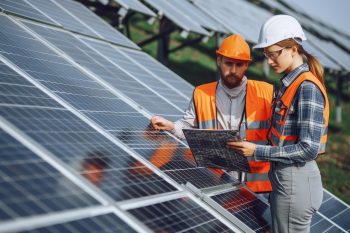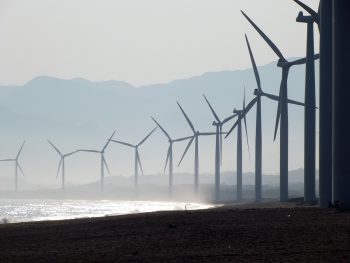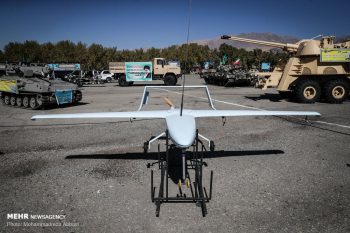EXCLUSIVE: Chance for breaking the Cycle of Violence in Afghanistan? By Professor Ijaz Khan
EXCLUSIVE: Chance for breaking the Cycle of Violence in Afghanistan?
By Professor Ijaz Khan
via www.GEOPoliticalMatters.com
Taliban have taken control of Afghanistan; The US and NATO have left after being defeated; Afghan National Army has collapsed; there is some resistance in Panjsher. The region and the world powers are adjusting to these facts for a new geopolitical game/ conflict in Afghanistan. But what is new about these facts? Violent changes with outsiders supporting different parties have been the history of Afghanistan and not just of the past 40 years. This cycle of violence with a few years of relative peace (in the sense of absence of violence) is known as the story of Afghanistan and educates most studies, including good academic ones. The same history provides context for most current analysis and probable future scenarios based on it. This small essay attempts to see a probability of that historic cycle of violence ending and Afghans and Afghanistan moving (with bumps and challenges on the road) out of it towards a peaceful (more than just absence of violence), democratic modern society and state.
The forces and presence of factors for the continuation of the violent cycle are not absent, however, along with a new non-violent resistance, which unfortunately is not counted in most analyses of where Afghans and Afghanistan are headed.
Afghanistan has traditionally maintained its independence, by a delicate balancing act between contending foreign powers, be that the British and Russia (and the Soviet Union 1917-1947), or the USA and Soviet Union during the cold war. During that period, though Afghanistan was formally free, foreign influences and even partial control were accepted by Afghans. Domestically, relative peace was maintained through a policy of repression (like in most medieval kingdoms), and state staying away from rural life, which was mostly lived per local tribal customs and traditions. Changes in monarchs were almost always violent and also had a foreign role.
Without going into the long historical background, one can safely say, the recent, (since 1979) history of Afghanistan is a story of one group violently taking power with foreign (direct or indirect) support and violent resistance to it also with foreign (covert or overt) support. Even earlier history at least since the 19th century, foreign powers have played an active role in governmental changes in Afghanistan. In the pre-1979 era, there were small or big periods of relative peace between violent eruptions. Since 1979, there is a continuous process of violence and destruction. With the current lull in active violent resistance, many suspects will be very brief. In most Afghan studies and policies, both Afghans and foreigners are educated by the pre-1979 history re-enforced by the post-1979 developments and are unable to see the changes that have come in Afghan society. Both Afghans and foreign interested powers are weighing options.
There is a National Resistance Front (NRF) in the mountains of Panjsher, with pockets of support in the rest of the country. The NRF is according to some unconfirmed news, planning to launch operations in March/ April, once the snow melts, in the meanwhile getting recruits, new and from the ANDSF (its members being hunted by Taliban now, pushing some to join NRF) and searching for foreign backers. There are differences within the Taliban too, which may erupt into violent conflict. These internal Taliban differences are also fueled by foreign considerations and interests. There are many foreign militant groups, aligned closely with the Taliban, who want to go home and fight there, expecting Taliban support, not just permission. However, most Taliban leadership believes, if these groups are permitted to go home, that will put in jeopardy their attempts to get the much-needed support it needs. These foreign militants are from Pakistan as well as Central Asia and very importantly China. Some foreign states may want to, if not overtly, then covertly support some of these groups. Then there is Islamic State, which currently is opposed by almost all foreign powers, but some state may consider it useful if it sees it more threatening to an opposite power.
Most Afghans and foreign Afghan watchers see Afghanistan through the lens of Afghanistan’s history of violent changes and believe the absence of or a weak armed resistance means no resistance. Looking at foreign commentary on the current situation in Afghanistan, most focus on the humanitarian crisis and Human Rights (and they are of urgent concern without doubt), with the latter gradually taking a back seat. This focus is also at least partly educated by the violent understanding of Afghanistan, with the same old geopolitical thinking, which can lead Afghanistan again or rather maintain Afghanistan as the battleground for foreign conflicts.
The US fresh out of Afghanistan and with a policy to disentangle as much as possible from foreign, especially middle eastern armed conflicts, refuses to be drawn back. However, it is viewing the developing situation from its conflict with China and Russia. US policy is to use its economic strength to influence the Taliban. The US is debating the option of continuing sanctions or engagement with the Taliban helping them with the (genuine) humanitarian needs justification. The driving force is more keeping the Taliban away from China (ideal would be Taliban as allies against China), fighting IS, and to a decreasing degree concerns for Human Rights. US policy will depend on how Taliban relations with China and Russia develop. China is cautiously helping the Taliban due to concerns about Uyghur militants enjoying safety with the Taliban but also watching US overtures to Taliban. The same goes for Russia. Pakistan Iran, India, Central Asian States, and also Saudi Arabia and Qatar will play their roles in the shadow of the world powers. These watch and see policies can turn into support for any violent resistance within Afghanistan and the Taliban, thus re-energizing the cycle of violence.
While most Afghan watchers look at the unfolding situation in the prism of this broader geopolitical outlook, interspersed with concerns for Humanitarian, Human Rights, Trade, Economy, and peace, there is a subtle change that has happened and happening in Afghan society that many, either don’t see or just see some of the manifestations of that change in the above described prism. While many talk of change or no change in the Taliban, the real change is in Afghanistan with which the Taliban find difficulty in adjusting. Taliban took Afghanistan in 1996, a Civil war-torn, and warlords ruled the country, with Gulbadin Hekmatyar bombing Kabul from just outside the city. The only resistance the Taliban faced after taking Kabul in 1996 was armed. There were no women or other demonstrators on the streets of Kabul and other cities. There was no articulation of any other choice for a way forward than oppose the Taliban through force or join them. No one argued for political engagement, which is different than supporting them and their ideas for Afghanistan. Today, we see a large number of young educated Afghans, within the country as well as outside, strongly articulating for a constitution, laying down the rights and responsibilities of people and the state. In 1996, when the Taliban said no female education it ended. Not so this time. While primary school girls are going to school, older ones are also going to school in some of the provinces. This reflects a changed Afghanistan, not changed Taliban. Taliban themselves seem not clear on how to proceed and deal with this new resistance. Also, there were no political parties (as different from militant groups) having different views than the Taliban, peacefully and quietly present and working, which we see today, even if not in active opposition. Though like most of the developing countries, there are name calling, accusations, one notes mature, serious debate and articulation of diverse opinions. Afghanistan has moved a lot on the political and social index.
There was and still is much talk of an intra Afghan dialogue, whether through a Loya Jirga or sitting around a table and an inclusive government. Dialogue is not just through such formal methods, but there are informal dialogues also. It is argued, that a non-formal intra Afghan dialogue is going on. The various articulations on media including social, the demonstrations on streets even if very small in number, the many Afghan individuals and organizations actively helping those in need of food or shelter as well as education including for girls and Taliban responses to them; whether beating them, pressurizing them or tolerating them needs to be seen as a process of political dialogue.
This process provides the route to ending the cycle of violence and a movement towards a peaceful forward looking Afghanistan. These societal groups don’t need much material support from foreigners and thus are relatively free from
foreign influences and are taking the country away from being a battleground for foreign conflicts.
UN role can be crucial in this process. The Afghan independent voices need to look more towards a leading role for the UN in the matter of Humanitarian aid, rather than individual states, whether it is the US, China, EU, or Arabs. The global civil society needs to establish strong relations with these Afghans and help those in need more through them and the UN. Increased UN role can help in weakening the geopolitical rivalries playing out in Afghanistan, via humanitarian aid or otherwise.
Whether the cycle of violence will continue or it will end depends mainly on Afghans, who if are able to take their informal dialogue to some level, not necessarily an ideal solution, the foreign interests, big or small, near or far, will adjust themselves accordingly. To conclude, it must be said, the movement forward is not either or between the two scenarios, rather both may play out, however, the new Afghanistan will impact even the cycle of violence along with foreign conflicts and have the potential of pushing while that plays out, towards a better and balanced outcome. In such a situation the role and thus burden of those working towards laying foundations of a peaceful modern Afghanistan
Chance for breaking the Cycle of Violence in Afghanistan?
Prof. Ijaz Khan
Former Chairman
Department of International Relations
University of Peshawar, Khyber Pakhtunkhwa
Image Credit: Laila Roth








